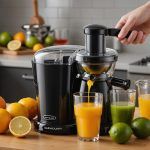Safety Tips for Baking with Kids
Ensuring safety in the kitchen when baking with children is essential for a fun and accident-free experience. The key to maintaining child safety is constant supervision and engagement. Encourage kids to participate actively while you closely monitor them. This approach not only keeps them safe but also makes baking an enjoyable learning experience.
Identifying common baking hazards is the next step. Children may not be aware of the dangers posed by sharp tools, hot surfaces, and electrical appliances. Explain the importance of handling these items with care. For instance, teach children to wait for adult assistance when using the oven or sharp knives.
This might interest you : Transform your kitchen with bamboo: embrace sustainable style and unmatched benefits
Teaching kids kitchen safety protocols prepares them for safe and independent baking in the future. Introduce simple rules like washing hands before baking, tidying up spills immediately, and keeping hair tied back. Additionally, discuss the importance of not touching hot surfaces or inserting metal objects into appliances.
Here are some straightforward safety tips:
Topic to read : Transform Your Kitchen with Bamboo: Eco-Friendly Elegance and Modern Style
- Always supervise baking activities.
- Identify and mitigate hazards.
- Teach essential safety protocols.
By equipping kids with these skills, you can ensure a safe and enjoyable baking experience while fostering independence and confidence in the kitchen.
Age-Appropriate Baking Tools
Introducing child-friendly baking tools can greatly enhance a child’s baking experience while ensuring safety. When selecting baking equipment for kids, opt for tools specifically designed for little hands. These can include smaller whisks, rolling pins, and plastic knives, which are essential for safe and confident handling.
Kids’ engagement increases when they are part of the process, so involve them in choosing their own tools. This not only boosts their enthusiasm but also makes them feel invested in their learning journey. Consider tools with bright colours or fun designs to pique their interest further. Durable materials like silicone or plastic are preferred over glass or metal to mitigate potential injuries.
Choosing the right size of kitchen equipment is crucial. Ensure that utensils fit comfortably in a child’s grip to promote a sense of independence and skill development. Additionally, including safe kitchen utensils like heat-resistant spatulas or grippy mixing bowls can prevent accidents and spills.
Lastly, tools should be stored at a child’s accessible height. This facilitates independence, encouraging them to explore and experiment with baking equipment safely. By providing child-friendly tools, children can enjoy baking activities in a secure and supportive environment.
Fun Recipes Suitable for Kids
Introducing kids baking recipes can transform ordinary baking into an exciting adventure. Start with simple and enjoyable recipes such as cookies or cupcakes, which offer room for creativity while keeping the process manageable. Opt for easy baking projects that require minimal supervision, allowing children to experiment without frustration.
Incorporate seasonal themes or holidays into your baking adventures to pique children’s interest and make each session memorable. For instance, pumpkin-shaped cookies for Halloween or heart-shaped cupcakes for Valentine’s Day provide a delightful twist to standard recipes. This approach not only makes baking fun but also educational, as kids learn about seasons and celebrations through hands-on activities.
Encourage children to express their creativity by personalizing their recipes. Allow them to decide on ingredient variations, such as adding sprinkles, chocolate chips, or food colouring. This personalization bolsters creativity and fosters a deeper connection to the baking process.
Remember, fun cooking with children is about the experience, not just the final product. Provide opportunities for kids to engage and explore, thus cultivating a love for baking that can grow alongside their skills. By embracing these fun and creative projects, children can develop confidence and joy in the culinary world.
Kitchen Layout and Organization Ideas
Creating a safe baking environment starts with an effective kitchen organization for kids. A child-accessible kitchen layout enables young bakers to safely and independently participate in baking activities. Start by arranging kitchen tools within their reach. Allocate a lower cabinet or drawer for storing frequently used items like mixing bowls, measuring cups, and child-friendly baking tools. This provides easy access and encourages independence.
Designate a specific baking area within the kitchen. Use a small table or a corner of the countertop where children can freely work without causing clutter or chaos. Ensure the area is away from sharp appliances or hot surfaces to minimize accidents.
Incorporate storage solutions that prioritize safety and accessibility. Use bins with sturdy handles or open shelves where ingredients and utensils can be stored safely. Additionally, label containers with both text and pictures to help non-readers identify ingredients. This system not only keeps the kitchen organized but also teaches responsibility and cleanliness.
Encourage children to participate in organizing tasks, allowing them to take ownership of their space. A well-organized kitchen fosters a secure environment that inspires kids to explore the joys of baking while instilling safety and order.
Creative Decorating Suggestions
Unleash your child’s artistic flair with fun decorating techniques designed to enhance their baking experience. Explore simple methods like using sprinkles, icing, and fresh fruits to transform treats into visual delights. These kid-friendly decorating ideas not only add vibrancy but also encourage children to express their unique personalities through baking.
Envision creating homemade decorating tools to foster innovation. Using items like ziplock bags as piping bags for icing can be an exciting alternative to traditional tools. Parents can also assist in crafting fun cookie cutters from cardboard to create personalised shapes, adding an extra layer of creativity to the activity.
For an even more immersive experience, organise themed baking events or friendly decorating contests. Such events captivate children, encouraging them to showcase their baking creativity in a competitive yet supportive environment. Create a theme, perhaps around a favourite book or character, and let the kids’ imaginative designs take centre stage.
Incorporating these suggestions will amplify the joy of baking, allowing children to take pride in their accomplishments. By offering opportunities to personalise and innovate, children develop not just culinary skills but also a profound love for creative expression.







